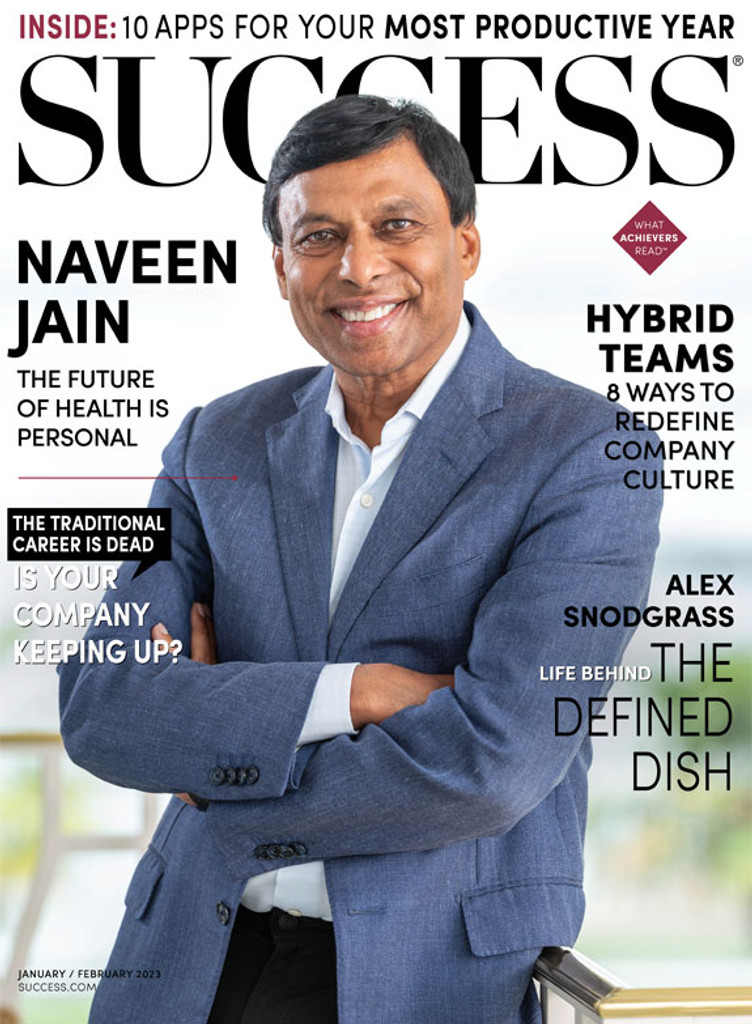There’s an episode of That ’70s show where Red Forman, a gruff husband and father, is searching for a new job after the auto parts plant where he worked closed.
While suited up and on his way out the door to a job interview, he boasts to his family, “I don’t need an edge. I’m Red Forman. I’m experienced, loyal, hardworking.” His daughter, Laurie, chimes in, “That’s the trifecta of employability!”
At least, it used to be. The notion of showing up to work, punching in, completing a designated series of tasks, punching out and returning to repeat that pattern every day for the span of one’s career has effectively expired. As the context around work and personal life has changed, so has the balance between them.
The Great Reset
The pandemic accelerated an already existing desire among the employee population to get something more out of work—whether an aligned purpose, an opportunity to grow or the ability to contribute to a higher cause. Many workers began to demand their worth by refusing to settle for anything less than fair wages and employers’ trust.
Because of this “great reset,” employers must be equipped with processes and behaviors centered on employee investment. Company goals are no longer just about meeting revenue targets. They’re about intrapreneurship: feeding into employee strengths and creating a culture where everyone, regardless of role, feels the personal satisfaction of growth and achievement.
Heather E. McGowan, a thought leader, researcher and future-of-work strategist, notes the shift in employee contributions over the past half-century.
“A recalculation of the S&P 500 in 1975 [shows] 87% of [shareholder] value came from tangible things, property, plant equipment—because we made stuff,” she explains. “Now, 90% of the value is intangible. That’s ideas and patents, etc. It’s human activity. So people are starting to realize that humans are the most important asset in an organization, and that’s why we’re shifting to humans as an asset to develop rather than a cost to contain.”
The Face of Intrapreneurship
In some cases, traditional work meant completing a list of tasks with little room for employee innovation or improvement. It stifled creativity, led to employee burnout and, although still netting profits, limited the possibility of brand expansion. Operations this strict and stagnant may have been a fit for manufacturing work, but in an age where enterprising ventures reign supreme, it “doesn’t really make any sense in terms of how creativity works or how knowledge works or how explorations work,” McGowan says.
So what does intrapreneurship look like? Think of entrepreneurship—unlimited creativity, trial and error, supportive friends—within the parameters of an organization. It could mean giving employees room to problem-solve, improve efficiencies or even develop additional revenue streams. In other words, employees should be encouraged to keep an open mind and freely explore the ways certain systems are working—or not working. Those in leadership positions should do the same. It takes a conscious effort to break the status quo, but an employer must always think of the potential: A single, out-of-the-box idea can shift the entire trajectory of a business.
The Benefits
Years ago, Google implemented the 20% rule for its employees, an idea that workers should spend at least 20% of their time exploring new ideas and projects that could potentially reap massive benefits. In a letter to would-be shareholders in 2004, the co-founders noted that the habit “empowers [employees] to be more creative and innovative,” and that many significant advances happened during that allocated time. Those advances include AdSense, Google News and Gmail.
Company growth and an increase in revenue are the most evident rewards for nurturing creativity. Business and branding expert Charlene Walters observed that “when your employees function with an entrepreneurial mindset, they make decisions based on profitability and the bottom line. They won’t pitch projects or ideas just because they sound cool or interesting; they will pitch ideas because they show profit potential.”
Of course, those ideas may still be cool or interesting, although most are devised with an intent to streamline a process or workload or generate mass appeal.
A less direct but equally important upside of fostering an intrapreneurial spirit is retention. When employees feel free to entertain their creative side at work, their engagement soars. This is a win-win; the company has every opportunity to excel with a team of committed employees driving growth.
McGowan is quick to add a caveat here: Intrapreneurship shouldn’t be touted as an employee benefit; creativity and problem-solving are an intrinsic part of being human, and strengthening those is just good company policy. “If humans are the most important asset in your organization, keeping them compensated well, rested, refreshed with good physical and mental health is a way of taking care of the most important asset in my organization. It’s not cost cutting,” she adds, to withhold these things.
How Leadership Can Encourage and Promote Intrapreneurship
Intrapreneurship in an organization depends on leadership. The first step to enabling an entrepreneurial mindset in employees is through connection, McGowan says. Find out what employees are interested in, what they’re curious about and what lights their fire. Take the time to listen, pinpoint their source of creativity and allow them to work out of that space. McGowan puts it simply: “If you don’t listen to them, you’re gonna lose them.”
Take that a step further by getting comfortable with relinquishing some control over how the business operates—and, most importantly, losing any trace of the “what I say, goes” mentality. Trust—which McGowan notes is “the only human performance-enhancing drug”—is a tenet of effective leadership.
Trust means more than allowing your employees to work from home without being monitored. Building real trust requires leaders to cultivate an environment that’s supportive and suitable for the free exchange of ideas. Timothy R. Clark, the founder and CEO of leadership consulting agency LeaderFactor, writes about this in The 4 Stages of Psychological Safety. In it, he describes four stages of safety with results that range from feelings of acceptance to the freedom to ask questions. Together, these four stages nurture a foundation in which intrapreneurship can thrive.
To arrive at this place means throwing out the top-down leadership model and accepting that you are no longer the sole expert in your organization. Max Heineman, the CEO and co-founder of video production company Toldright, adopted that mentality for his organization. In an episode of In the Details with Karen Allen (part of the SUCCESS Podcast Network), he explained that Toldright has taken extra measures to be flexible, foster creativity, give people time off and establish feedback opportunities for all employees in an effort to build this type of trust.
Take the Plunge
Intrapreneurship naturally implies risk. Everything from adjusting an in-house procedure to launching a new product involves treading carefully through uncharted territory. But taking a chance on an employee’s idea can also result in a long-awaited breakthrough.
McGowan illustrates this with Apple’s eradication of the Sony Walkman. “It took 40 years for [the Walkman] to reach 400 million units. The iPod did that in 13 years. And the only thing that stopped it was the iPhone—which did it in about three and a half. So Apple came up with a product that completely killed its most prominent product before then. And that’s what organizations need to be willing to do. If the next frontier means cannibalizing your existing products or services, you just have to be willing to do it.”
You also have to be willing to optimize your employees’ creativity and skill sets to achieve that chance of success.

This article originally appeared in the January/February 2023 issue of SUCCESS magazine. Photos by Shutterstock











